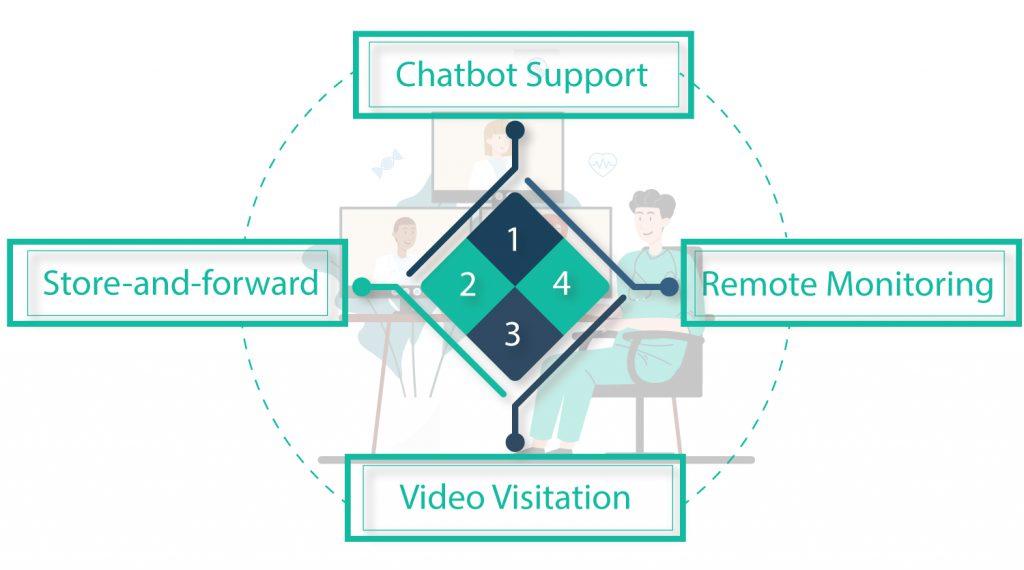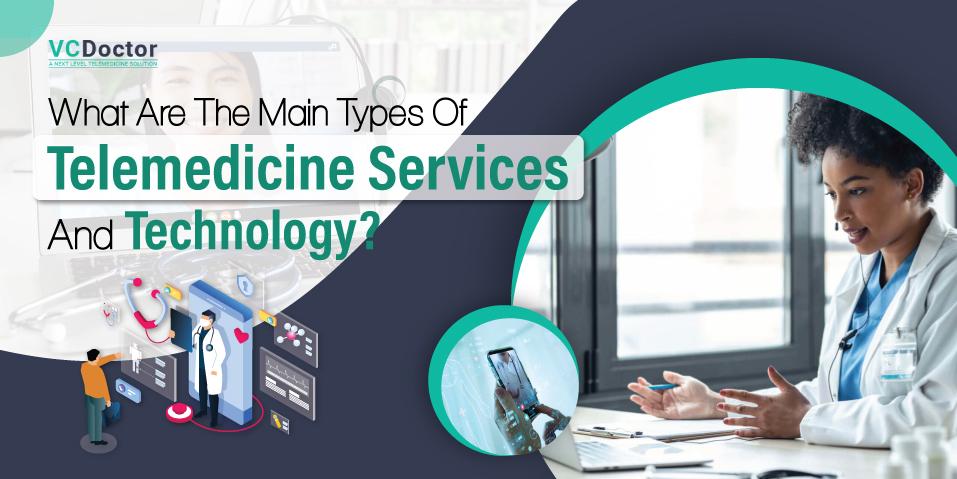What are the main types of telemedicine services and technology?
Telemedicine services are becoming popular because they offer a better experience for patients and doctors. There are a few main types of telemedicine services and technology:
-remote patient care, telehealth,
-video-based health care, electronic medical records (EMR), and
-telesurgery.
Whether you’re looking for help with a medical issue, want to schedule a check-up with a doctor online, or need to chat about your health, Telemedicine can help! But what are the main types of telemedicine services available today? Read on to find out!
Table of Contents
- What are telemedicine services?
- Difference between Telemedicine & telehealth technology in healthcare
- What are the benefits of telemedicine services for patients?
- What are the types of online telemedicine services?
- What are the telemedicine technologies used in telemedicine services?
- Conclusion: How are telemedicine services changing the future of healthcare?
- FAQs’ on Telemedicine services and technology
What are telemedicine services?
Telemedicine services allow people to access health care from a distance, either in person or online. health-care-teleshopping. It is a practice of remote health care. It uses communications technology to link healthcare providers to their patients. This allows them to spend more time treating the patient and less time traveling between appointments. Additionally, video calls and online consultations with doctors offer patients a more engaging and immersive experience.
Difference between Telemedicine & telehealth technology in healthcare
Telehealth is part and parcel of Telemedicine, which uses electronic medical records (EMR) to transmit health information between healthcare providers and patients. Telehealth services can provide real-time care for conditions like cancer, chronic diseases, mental health issues, and newborns.
Telemedicine allows healthcare professionals to treat patients in different parts of the world; telehealth technology helps them communicate with their patients to provide comprehensive care.
What are the benefits of telemedicine services for patients?
There is a list of benefits that telemedicine service providers offer to patients:
– Patients can receive care from doctors in different parts of the world.
– Doctors can save time traveling between appointments.
– They can get care from specialists without having to travel long distances.
– Video calls and online consultations offer patients a more engaging.
– Patients have access to health information and advice.
– And they can stay in touch with their families while receiving health care.
What are the types of online telemedicine services?

Telemedicine services have revolutionized how we care for our loved ones and patients.
There are three types – remote patient consultations, video visitation, and chatbot support – and each has unique benefits and features. Let’s learn more about these services below:
Store-and-forward
Store-and-forward is a great way to see a doctor. The doctor will store your medical data. Then, he will transmit it in real time to the doctor you’re seeing. This allows for a much better experience, as the patient and the doctor can see everything going on without any inconvenience or delays.
Remote Patient Monitoring
Remote patient monitoring services are becoming more popular as people become more familiar with the dangers of leaving elderly parents or children alone. They can use these services for various purposes, such as checking health, monitoring conditions in schools and businesses, and keeping an eye on loved ones at work.
Video Visitation
Video visitation services allow patients to see their healthcare providers in real-time as if they were in the same room. This is an excellent option for patients who are shy or have anxiety issues. Patients can also use video visitation services to keep their health care up-to-date and share memories with loved ones.
Chatbot Support
Chatbots are AI-generated computer programs that simulate human conversation.
They’re an ideal tool for telemedicine services because they offer a way to provide tailored medical advice and assistance to patients without having them talk into a phone receiver all day long.
What are the telemedicine technologies used in telemedicine services?
New telemedicine technologies, including telesurgery, virtual reality/AR, and augmented reality, are overgrowing. These technologies provide patients with more immersive and interactive experiences that can help them better understand their medical conditions and treatment options.
Here Is a list of emerging telemedicine technologies that are ruling the healthcare sector:
Tele-robots
Tele-robots are devices that help doctors diagnose and treat patients. They use sensors and cameras to gather data from the patient, which is then processed by a computer to provide diagnoses or treatments.
Artificial Intelligence
Artificial Intelligence (AI) is gradually getting adopted in telemedicine services for various purposes. For example, it helps automate routine tasks and makes telehealth even more efficient and convenient for patients.
IoT and nanotechnology
Telemedicine technology is evolving to include more devices and applications that connect people with doctors remotely. This has led to the development of medical-grade IoT devices and apps that monitor health conditions in a patient’s body in real-time.
Nanotechnology is also playing an essential role in this field, as it is helping to create miniature sensors that can be embedded in medical devices for accurate-time monitoring.
3D Printing
3D printing technology is increasingly used in Telemedicine to produce prosthetic limbs and other medical devices. In addition, telemedicine services can transmit medical images and data and provide consultations remotely.
Augmented and virtual reality
VR and AR are two of the most popular technologies today. They both have several applications, some of which we’ve just touched on.
Telemedicine services use these technologies to provide healthcare remotely – this is especially useful for people who can’t visit doctors or hospitals regularly because of their location or health conditions.
Conclusion: How are telemedicine services changing the future of healthcare?
Services of Telemedicine are becoming increasingly popular as they offer a convenient way for patients to access medical care from remote locations. The technologies used in Telemedicine – including artificial intelligence, IoT, and nanotechnology – are evolving, which means that the services provided will too.
Overall, telemedicine services and technology offer a way for people to get medical care from a distance that is more convenient and affordable than traditional care. Check out VcDr App – the best telemedicine services providers available online.
FAQs’ on Telemedicine services and technology
Are telemedicine services helpful?
Telemedicine services can be helpful in many ways. For example, they can allow people to access medical care from a distance that is more convenient and affordable than traditional care.
They also offer the potential for telehealth intervention when medical professionals provide healthcare interventions (such as treatment or counseling) over the internet.
How can I find a good telemedicine service?
The best telemedicine services will vary depending on your needs. However, some things to consider when finding a good telemedicine service include whether the provider has a robust network of medical professionals and telemedicine clinics from which you can access care, how easy it is to use the service, and whether there are any restrictions or limitations on its use.
Which is better: home health care or telemedicine services?
For some people, home health care may be the best option for accessing medical care. Home health aides typically visit patients in their homes and provide essential healthcare services such as dressing changes and housekeeping.
On the other hand, telemedicine services can offer a more convenient way to access medical care by allowing you to connect with physicians or clinics from a remote location. But, have certain limitations – for example, they may only be available in some locations or during all hours.
Are there any drawbacks to using a service for Telemedicine?
There may be some drawbacks to using a telemedicine service, such as the potential for online privacy issues.
What are some examples of telemedicine services?
Some examples of telemedicine services include remote mental health care, prescription refills, and diagnostics.




